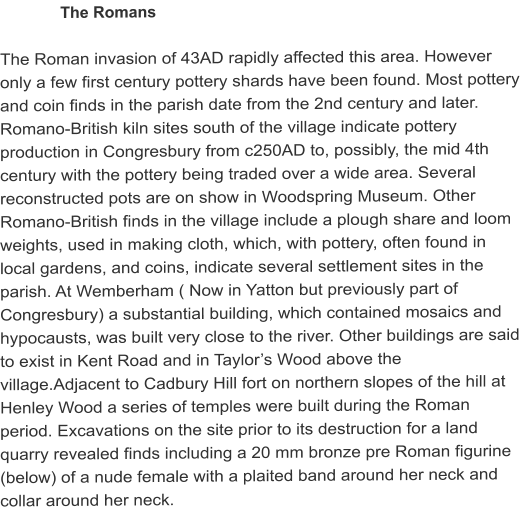
CONGRESBURY HISTORY GROUP








Before St Congar
Post Roman Cadbury Hill
The most significant period in the history of the hill occurred when it was reoccupied in the post
Roman period.
“In 1959, Keith Gardner excavated some well-targeted evaluation trenches at Cadbury, which
identified for the first time the post-Roman imported pottery that showed this site was
extraordinarily important.
Study of the finds from the excavations showed imported pottery from Syria, North Africa and
Francia; there was also evidence for Germanic glass, and for smelting, glass-bead making, and
extensive food remains. Round house foundations of post-Roman date occurred (very
unexpected at the time) and the remains of one end of a great timber hall. The banks of the fort
had been completely restructured in the post-Roman period.
The site clearly had links with Byzantium in the 5th and 6th centuries AD: This was no hovel on a
hill-top
Maybe we should all just think and wonder a little more that a great lord of men held court in a
huge wooden hall on our hill top, in that mysterious period after the fall of Rome, but before the
coming of the English. He lived in the midst of his warriors, clerics, potters, storytellers, jugglers,
smiths, glassmakers and so on, and was on terms with the Emperor of the mightiest city of the
time, far Byzantium in the eastern Mediterranean. He even drank his wine and ate his meat on
platters from those far lands”.
Vince Russett


It looks unexciting but
pottery fragments such as
this piece revealed trade
over vast distances





























